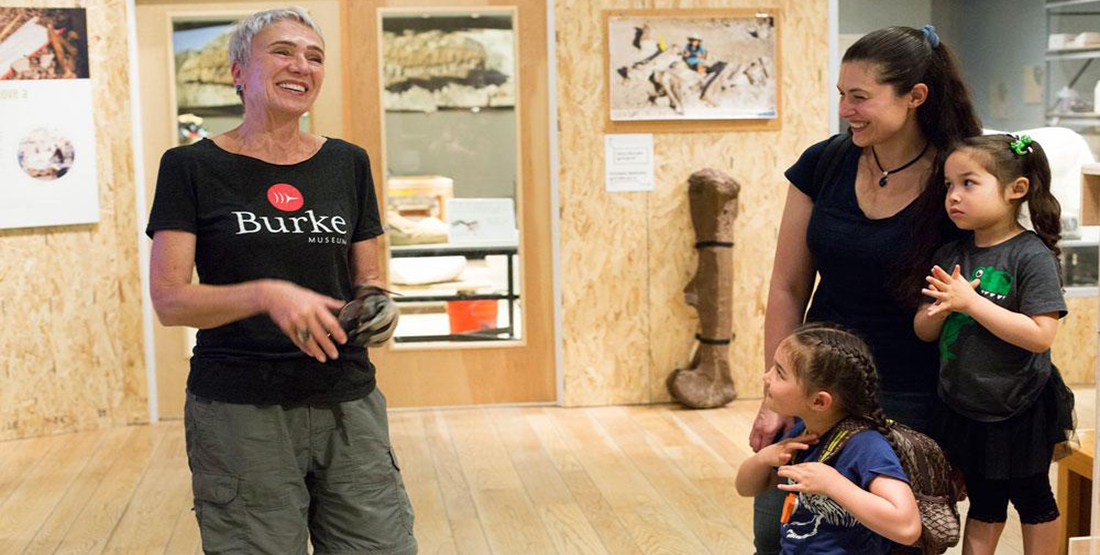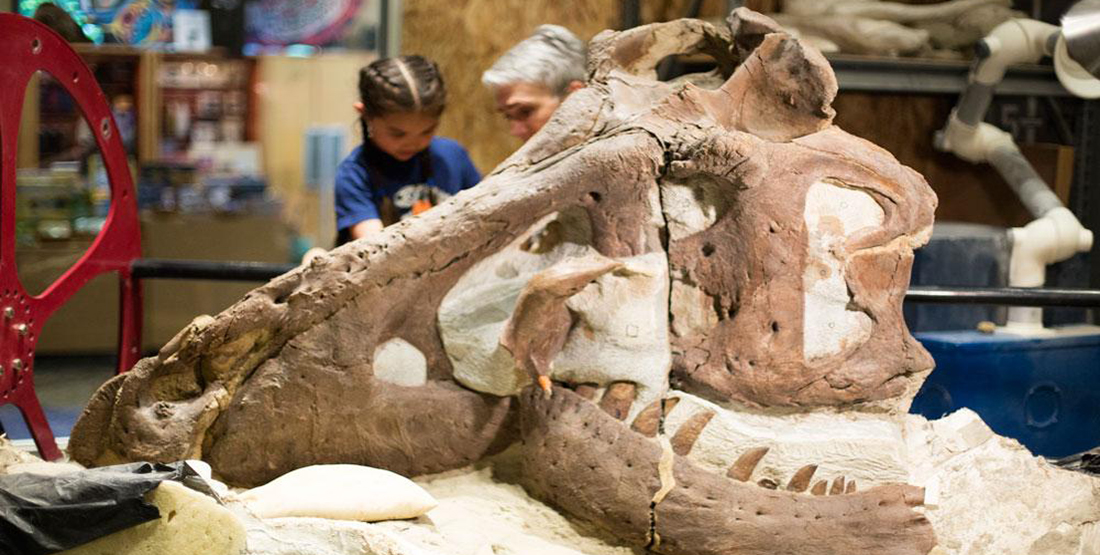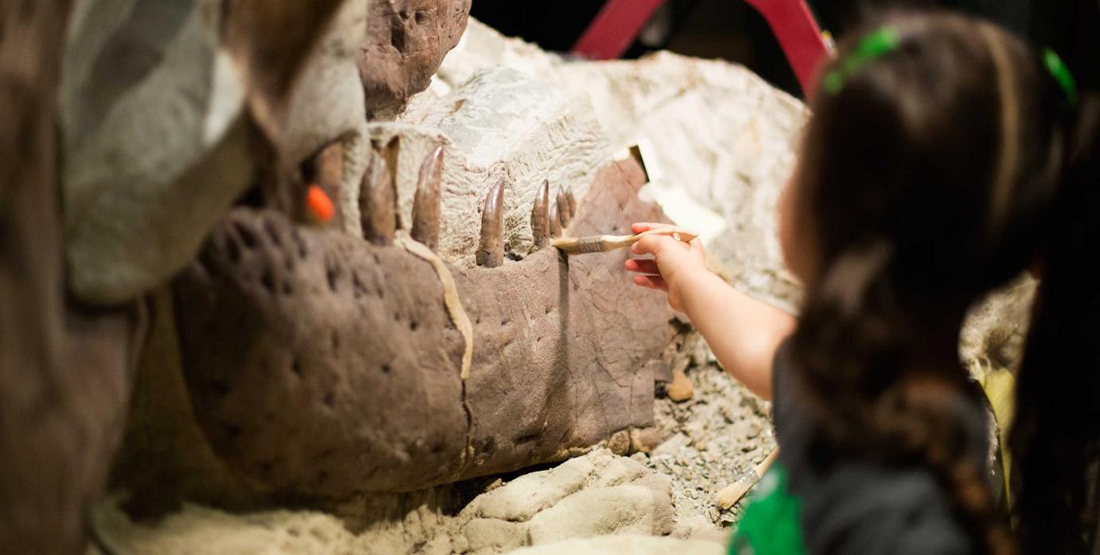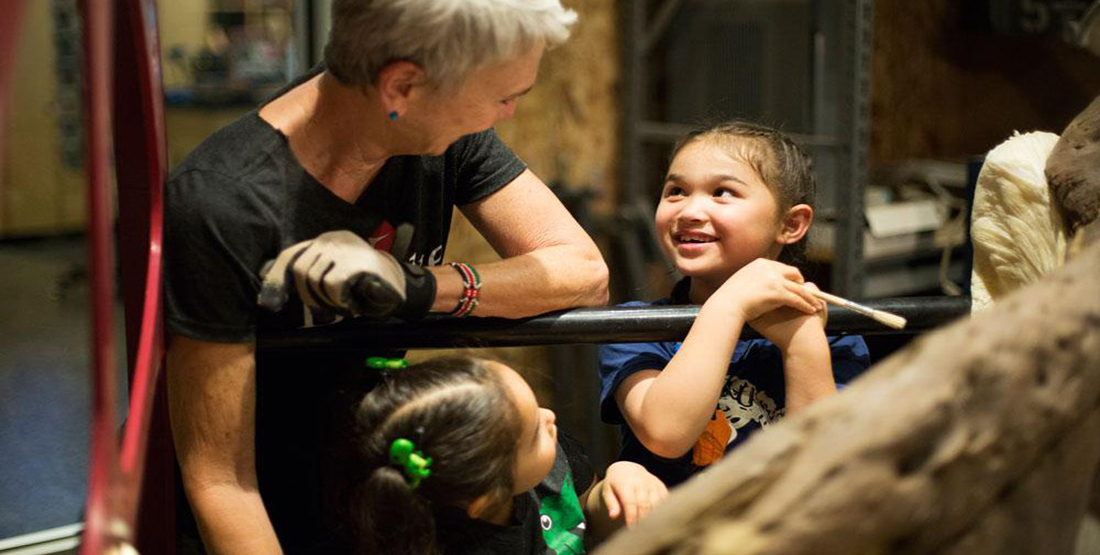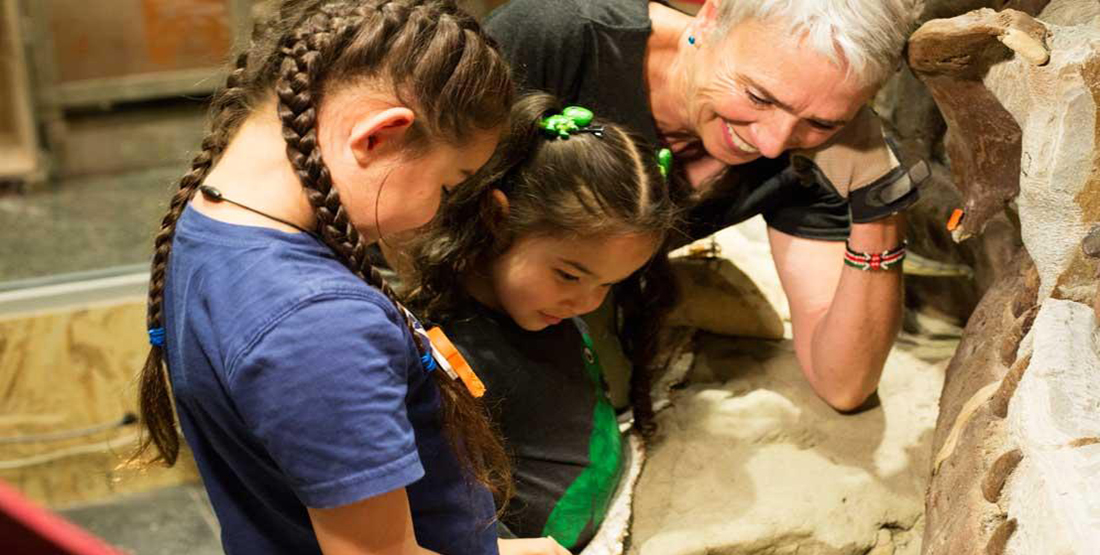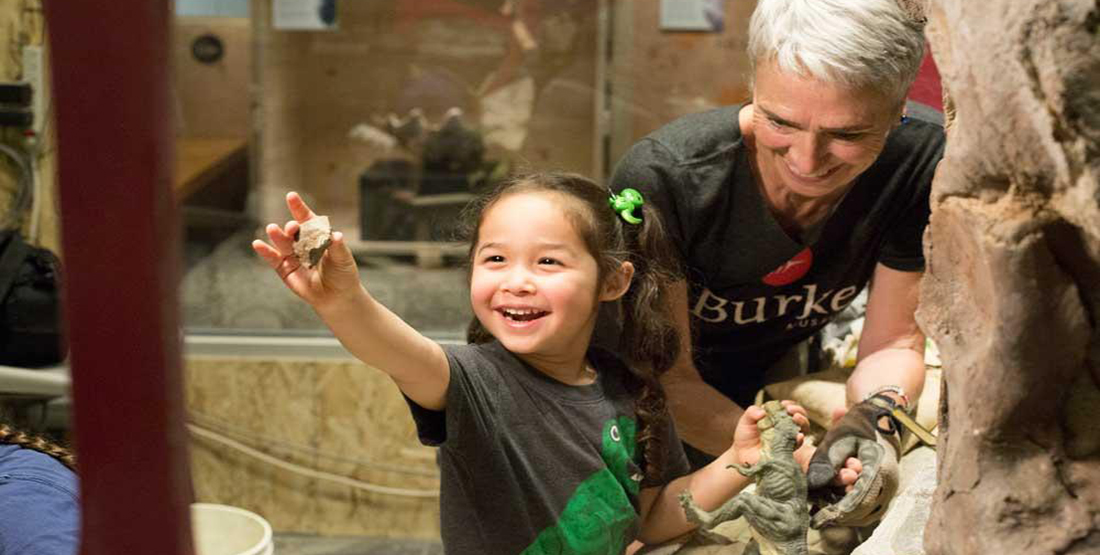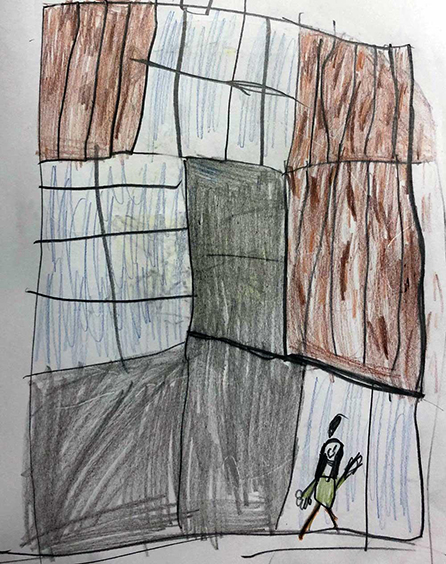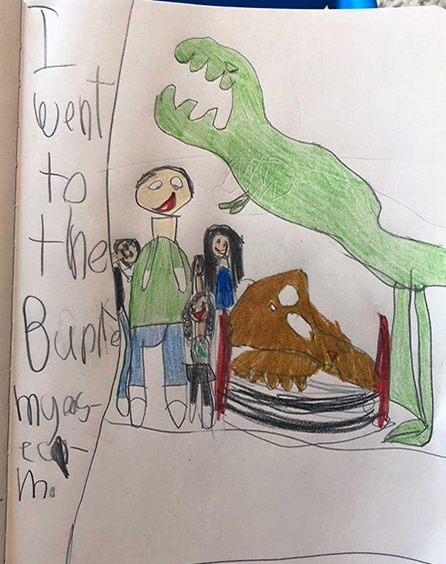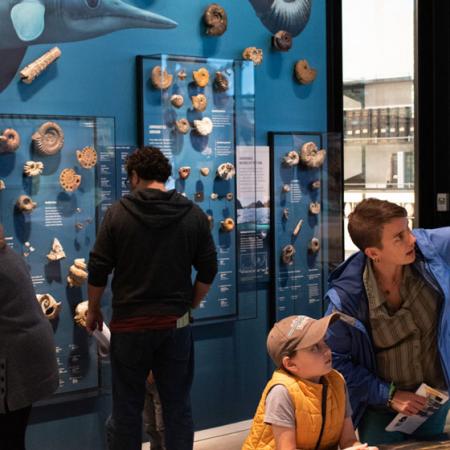Lauren reminds Shira that she had a question she wanted to ask Prim as well as Michael Holland, the Burke’s Hell Creek Project fossil preparator, also known as the designated T. rex wrangler. “She wants to know how to pronounce Ornithischian and Saurischian,” said Lauren. Without skipping a beat Prim and Michael each give their take on the pronunciation but warn that it can vary depending on who you ask.
The high-pitched sound of airscribes, or miniature jackhammers, can be heard as volunteers chip away rock from fossils in the prep lab.
“Should we go see what’s new with the T. rex?” Prim asks.
The Tufts-Love T. rex skull
The massive 66-million-year-old skull, nicknamed the “Tufts-Love” T. rex after the two Burke volunteers who discovered it in Montana* in 2015, is one of approximately 15 known T. rex skulls in the world. It was unveiled to the public last August as part of the Burke’s Testing, Testing 1-2-3 exhibit, where visitors can watch as fossil preparators, like Prim and Michael, get it ready for future display.
As the lead volunteer preparing the T. rex skull, Prim has helped to remove hundreds of pounds of sandstone surrounding the skull, gradually revealing the fossilized bone underneath. Prim recalls one particularly profound moment: “We were just starting [to uncover] the T. rex’s nostril, and I remember just being overwhelmed by that—that this was once a living, breathing animal—and I just started to cry.”
Prim, a retired University of Washington medical research scientist, has always been passionate about science, even at a very young age. “[Science] was never intimidating for me, but I knew that wasn’t the case for everyone,” she said. “Each day I try to take something that’s really complicated and make it accessible and relatable for people.”
Standing face-to-face with T. rex
Prim walks the girls over to the skull and helps them up so they can see a new section of the T. rex’s upper palate that was uncovered last week. “See [the bone] starts here and it ends right here.”
“That goes all the way over here?” asks Shira, clearly intrigued by the distance between bone fragments. “I didn’t realize that bone was that long!” She scans the skull, her eyes focusing on a protruding injury above a tooth on the T. rex’s upper jaw. “Oh, there’s the boo-boo,” Shira says. It’s something they’ve learned to identify during a previous visit.
The three stand together, in front of a skull that would make anyone feel small, and feed off of each other’s excitement, bonded over a mutual love of dinosaurs and science.
“I already was trying to find ways of encouraging [their passion] and then this came along,” says Lauren. “They get to ask questions about every tiny thing. And then they ask the same questions five times.”
“They do come up with questions that are often a little bit surprising for their age,” Michael chimes in. “It’s always a fun day when these two show up.”
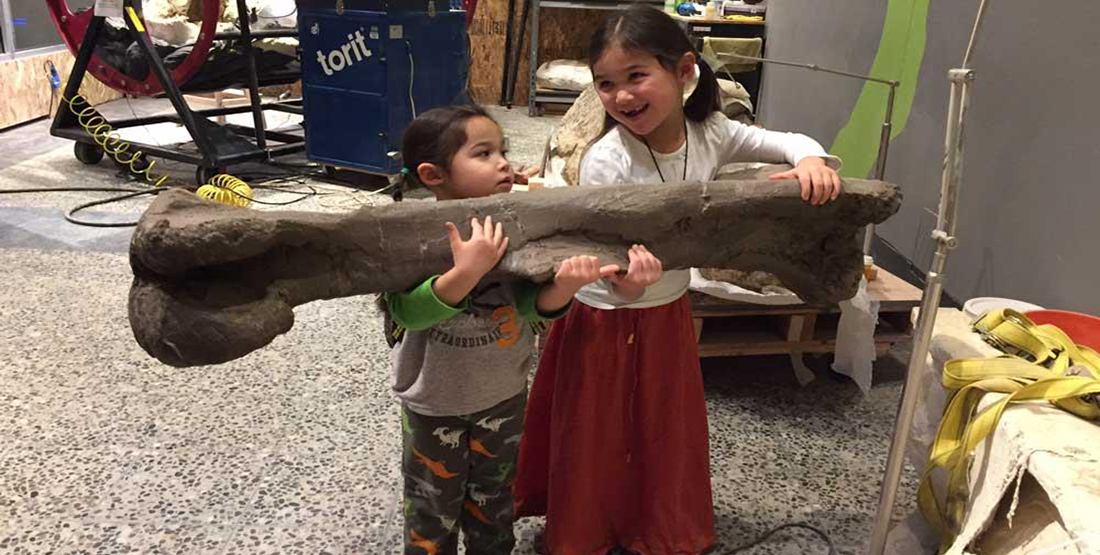
A photo of Meredith and Shira holding a cast of a Hadrosaur femur during a visit in fall 2017.
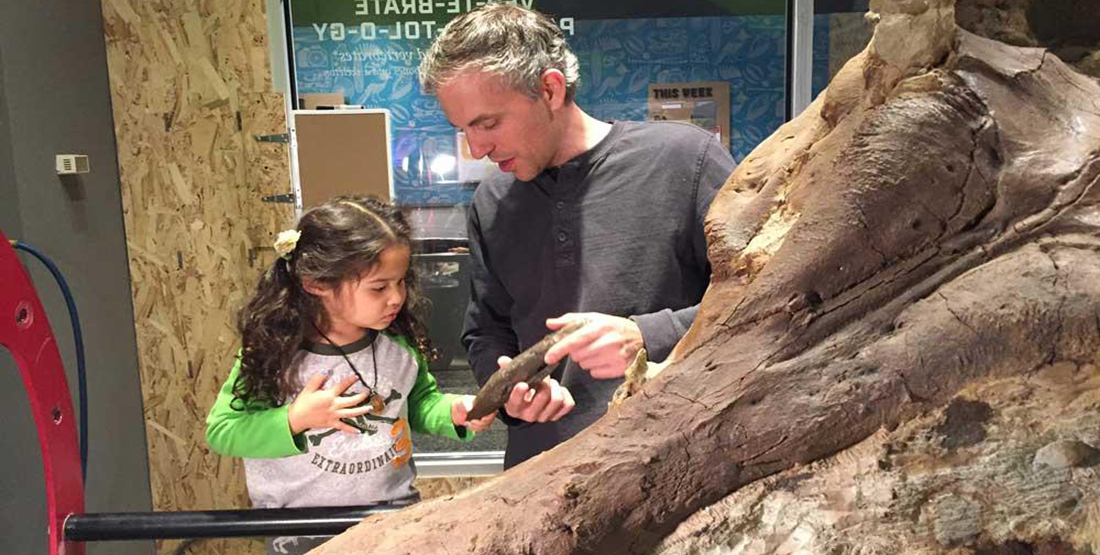
Michael Holland shows Meredith a 3D-printed replica of a T. rex tooth.
“They’re just absorbing it all”
Like many parents of mini-paleontologists, Lauren and her husband Tony had little exposure to dinosaurs until Shira started watching the PBS kids show Dinosaur Train. Shira’s fascination ultimately led Lauren to find the Burke Museum, the only place in Seattle with real dinosaur fossils on display.
“I think they’re just absorbing it all,” said Lauren. “They constantly want to come see what progress and new discoveries have been made.”
Eventually Meredith spots a plastic toy dinosaur sitting in the window and places a stray piece of rock on its head as a hat. “Look!” she exclaims with a big smile on her face.
“They take this completely for granted,” said Lauren. “They don’t understand that this is an unusual experience.”
Designing for authentic experiences
This type of authentic experience guided the vision for the new Burke Museum, opening in fall 2019. Visitors will be able to see into 12 different labs and workrooms where activities, from preparing specimens to vacuuming baskets, change all the time—immersing families in the day-to-day discoveries of a working research museum.
Shira and Meredith are excited for the New Burke to open. Their names will even appear on tiles on the “Burke Herd” community wall recognizing donors to the Campaign for the New Burke in the grand lobby. Their family’s contribution to the effort will help to bring this experience to life for more children like them.
“I just think it’s so exciting for young people here in this community to have access to something like this,” said Michael. “I remember being a little kid with a fascination with dinosaurs, so I understand how meaningful our interactions with kids can be. Any day when I can help make those experiences happen for others is a good day at work.”
Shira and Meredith leave the fossil prep lab brimming with visible excitement before giving more hugs to Prim and Michael. “See you soon!” Shira exclaims.
“They’re so excited by this and they’re so knowledgeable,” said Prim. “Every day I go home and think I am the luckiest person in the world.”
---
More information about the "Tufts-Love" T. rex excavation
The “Tufts-Love” T. rex excavation was led by Burke Museum Curator of Vertebrate Paleontology Dr. Greg Wilson and Research Associate David DeMar. Funding was provided by Nathan Myhrvold. Read more about the T. rex discovery.
*The T. rex skull and other fossils were collected with permits on federal land managed by the Bureau of Land Management.
More information about the Hell Creek Project
The Hell Creek Project is led by Burke Museum Curator of Vertebrate Paleontology Greg Wilson. Burke paleontologists, volunteers, undergraduate and graduate students from the University of Washington and other universities, and K–12 educators participating in the Burke’s DIG Field School contribute to the project.
